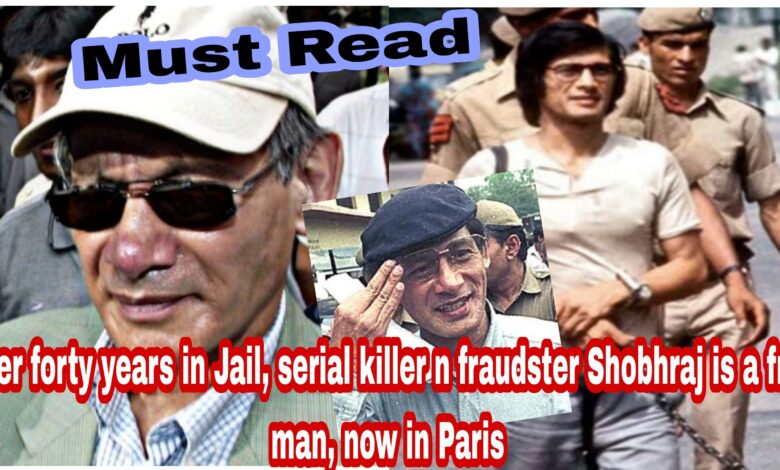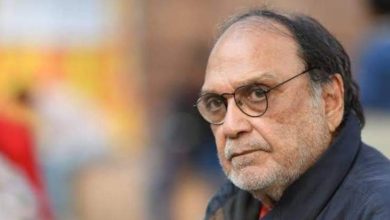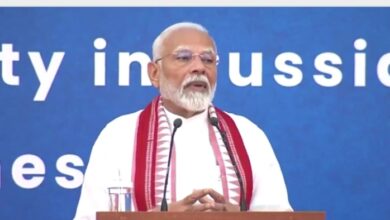Forty years in Indian n NEPALESE prison serial killer and stylish international fraudster Charles Shobhraj reaches Paris as a free man !


After being absent from the news related to crime circuits for a long time since his imprisonment for 20 years in Nepal after he was suddenly spotted by a foreign journalist Joseph Nathan in 2003 in a Casino in Kathmando, Nepal – the infamous international fraudster, serial killer and thief involved in over 12 confirmed killings and in all 20 murders, Charles Sobhraj was on 23 rd December released from the Kathmandu Jail, Nepal on health grounds after serving 19 years protracted sentence.
As per the court’s judgement this French bikini killer also known as serpent with Netflix and BBC producing a series on his “multiple murders” titled “The Serpent” being watched world over, born to a Vietnamese mother and Indian father, Charles Shobhraj has reached France after he was put on the flight from Kathmamdu Airport by Nepalese police via Doha to Paris, France.
Having spent 21 long years in Indian Jails including Tihar Prison and 19 years in Nepal prison, multiple serial killer, fraudster and thief who posed as a Gem dealer initially looking handsome in appearance dressed stylishly usually Charles Shobhraj today is 78 years old feeling extremely relieved.
Having undergone an open heart surgery in 2010,Charles Shobhraj still intends to sue Nepal government for putting him behind the bars for 19 long years for two murders which he says he didn’t do.
The reason for his release says that Shobhraj needs a next open heart surgery while he is 78 years old.
The life of Charles Shobhraj had been extremely interesting, thrilling, full of crime, being fugitive always running from country to country, looting tourists, drugging n then killing them even those who trusted him, having no concern for passion or emotional affinity.
According to his past history born in Saigon, now Ho Chi Minh City of Vietnam, notorious brutal killer Charles Shobhraj had murdered twenty tourists in South and South East Asia including 14 in Thailand. He was jailed in India from 1976 to 1997 for 21 years with a brief break of Tihar prison by drugging the jail guards finally being caught in Goa posing as Mr. Joshi frim Uttarakhand, due to his fair complexion n Pahari looks.
This jail break from highly sensitive and fully guarded jail of national capital had created headlines in a newspapers n breaking news in all the channels of the country.
Having been neglected by his mother and married to a French ( second father) after she had more children to the second husband Charles Shobhraj chose to crimes committing petty thefts initially and then posing as gem trader and committing crimes duping tourists of their money n valuables, killing them one after another for fear of being exposed lateron.
Charles embarked on the international crime trail and ended up in Thailand from France in 1975 flamboyantly posing himself as an affluent trader of gems.
His modus operandi would be to come in contact with the Western tourists, befriend and impress them, win their trust and confidence and then after drugging and robbing them, if necessary kill them and run away.
During those days the hippie culture was on the rise – fond of drugs and Charles Shobhraj used to arrange them drugs finally drugging and robbing them after winning their trust n confidence fearing his exposure.
Dressed sophistically and well versed in befriending and influencing the tourists Shobhraj was implicated in the murder of young American woman whose body was found in the beach of Thailand.
The dead woman was wearing a bikini. Since then he was named as a Bikini killer.
On the run, Sobhraj financed his lifestyle by posing as either a gem salesman or drug dealer to impress and befriend tourists, whom he defrauded.
In India Sobhraj met Marie Andrée Leclerc from Levis Quebec a tourist looking for adventure. Dominated by Sobhraj, Leclerc became his most devoted follower, turning a blind eye to his crimes and his philandering with local women.
Sobhraj gathered followers by gaining their loyalty, a typical scam was to help his target out of difficult situations.
In one case, he helped two former French policemen, Yannick and Jacques, recover missing passports that Sobhraj himself had actually stolen.
In another scheme, Sobhraj provided shelter to a Frenchman, Dominique , who appeared to be suffering from loose motions. Sobhraj had actually poisoned him.
He was joined by a young Indian man, Ajay Chowdhury, a fellow criminal who became Sobhraj’s associate in crime.
Charles Sobhraj and Ajay Chowdhury committed their first known murders in 1975.
Most of the victims had spent some time with the pair before their deaths and were, according to investigators, recruited by Sobhraj and Chowdhury to join them in their crimes.
Sobhraj claimed that most of his murders were accidental drug overdoses but investigators state that the victims had threatened to expose Sobhraj compelling or provoking Shobhraj to kill them.
The first victim was a young woman from Seattle, Teresa Knowlton (named Jennie Bollivar in the book Serpentine), who was found drowned in a tidal pool wearing a flowered bikini.
It was months later that Knowlton’s post mortem, as well as forensic evidence, proved that her drowning, originally believed to be a swimming accident was a murder.
The next victim was a young nomadic Turkish Sephardic Dew, Vitali Hakim, whose burnt body was found on the road to the Pattaya resort, where Sobhraj and his growing clan were staying. Dutch students Henk Bintanja, 29, and his fiancée Cocky Hemker, 25, were invited to Thailand after meeting Sobhraj in Hong Kong.
They, like many others, were poisoned by Sobhraj, who nursed them back to health in order to gain their confidence and trust.
As they recovered, Sobhraj was visited by his previous victim Hakim’s French girlfriend, Charmayne Carrou, who had come to investigate her boyfriend’s disappearance.
Fearing exposure, Sobhraj and Chowdhury quickly hustled Bintanja and Hemker out. Their bodies were found strangled and burned on 16 December 1975.
Soon after, Carrou was found drowned and wearing a similar-styled swimsuit to that of Sobhraj’s earlier victim, Teresa Knowlton.
Although the murders of the two women were not connected by investigators at the time, they would later earn Sobhraj the nickname “The Bikini Killer”.
On December 18, the day the bodies of Bintanja and Hemker were identified Sobhraj and Leclerc entered Nepal using the deceased couple’s passports.
They met in Nepal and, between 21 and 22 December, murdered Canadian Laurent Carrière, 26, and American Connie Jo Bronzich, 29, the two victims were incorrectly identified by some sources as Laddie DuParr and Annabella Tremont. Sobhraj and Leclerc returned to Thailand, using their latest victims’ passports before their bodies could be identified.
Upon his return to Thailand, Sobhraj discovered that his three French companions had started to suspect him of serial murder, having found documents belonging to the murder victims. Sobhraj’s former companions then fled to Paris after notifying local authorities.
Sobhraj’s next destination was either Varanasi or Calcutta , where he murdered Israel soldiers cholar Avoni Jacob to obtain Jacob’s passport.
Sobhraj used the passport to travel with Leclerc and Chowdhury; first to Singapore, then to India, and in March 1976, returning to Bangkok, despite knowing that the authorities there sought him.
The clan were interrogated by Thai police in connection with the murders, but were released.
Meanwhile, Dutch diplomat Herman Knippenberg and his then-wife Angela were investigating the murders of Bintanja and Hemker. Knippenberg had some knowledge of and had possibly even met, Sobhraj, although the latter’s true identity was still unknown to the diplomat, who continued gathering evidence. With the help of Nadine and Remi Gires (Sobhraj’s neighbours) , Knippenberg built a case against him.
He was eventually given police permission to search Sobhraj’s apartment a full month after the suspect had left the country. Knippenberg found evidence, including victims’ documents and passports, as well as poisons and syringes.
The criminal trio’s next stop was Malaysia , where Chowdhury was sent to steal gems. Chowdhury was observed delivering the gems to Sobhraj. This was the last time he was seen – neither Chowdhury nor his remains have been found. It is believed Sobhraj murdered his former accomplice before leaving Malaysia in order to continue his and Leclerc’s roles as gem dealers in Geneva. A source later claimed to have sighted Chowdhury in West Germany but the claim appeared unsubstantiated, so the search for Chowdhury continued, with no success of his trace.
Back in Asia, Sobhraj started forming a new criminal group, starting with two Western women, Barbara Smith and Mary Ellen Eather in Mumbai. Sobhraj’s next victim was a Frenchman, Jean-Luc Solomon who was poisoned during a robbery. The act was committed with the intention of incapacitating Solomon, but it killed him.
In July 1976 in New Delhi Sobhraj joined by his three-woman criminal clan, tricked a tour group of French post-graduate students into accepting them as tour guides. Sobhraj drugged them by giving them poisoned pills, which he told them were anti-dysentery medicine. When the drugs took effect more quickly than Sobhraj had anticipated, the students began to fall unconscious. Three of the students, realising what Sobhraj had done, overpowered him and contacted the police, leading to his capture. Sobhraj’s accomplices, Smith and Eather, confessed during interrogation. Sobhraj was charged with the murder of Solomon and all four were sent to Tihar Jail in New Delhi.
It may be recalled that notorious serial killer, international fraudster n thief Charles Shobhraj had married a twenty year old girl his Indian Nepali interpreter Nihita Biswas in Prison who had donated her blood to Charles during his oper heart surgery. While on the run after jail break he posed as an Uttarakhand while escaping from police having his paradise looks naming him as Mr. Joshi.






